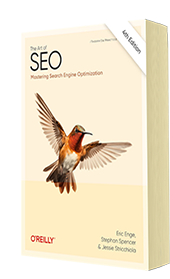SEO: RSS Feeds Increase Visibility
Really Simple Syndication (RSS) is a great way to deliver content into the hands of potential website visitors. It is also a channel for syndicating your content onto others’ websites. And, of course, with that comes links — deep links into your latest products, best sellers, articles, buyers guides, blog posts, forum posts, special offers and clearance items — whatever you feature in your RSS feeds. Hopefully you will recall from my past columns how crucial links are to your search-engine rankings.
Your RSS feeds are a conduit for reaching influential bloggers who, for whatever reason, have an interest in your site. In addition, your RSS feeds could be picked up by RSS search engines like Feedster, Technorati and Google Blog Search. Many bloggers subscribe to search results feeds from these search engines to keep up with what is happening on a particular topic or industry. Thus, if something featured in your RSS feeds include the keywords that the blogger is tracking with their RSS search results subscription, you will end up getting in front of that blogger even if he or she is not subscribing directly to your RSS feed.
Within the feed, the titles of each of your items should be keyword-rich, because they will, more likely than not, become anchor text in the links that point to you from blogs and syndicating sites. It is important not only to have relevant keywords in each item title, but to also incorporate your brand name into the item title and include relevant keywords and synonyms into the <content: encoded> container.
Your overall feed should be optimized for the most important keyword you are targeting by including those keywords in the site’s <title> container. Also have a compelling site <description> that draws people in. When searching on Google Blog Search, related blogs will often be displayed at the top of the results. Google creates these listings from your feed’s title and description. You may be tempted to put tracking codes into the URLs of the links contained within your RSS feed, for example, appending a ?source=rss to the end of all your URLs. Don’t do it. It will dilute each page’s link gain (PageRank) by creating a duplicate version of each page with a unique URL, rather than aggregating link gain to one definitive version of the page.
RSS feeds can include “enclosures,” which are references to multimedia files. Podcasting is simply including enclosures in your RSS feeds so people can subscribe to the audio and video you produce without having to think about it. Your MP3 files will automatically download to the subscriber’s computer and into their iPod. Having an RSS feed with enclosures is your ticket into even more directories and search engines, namely podcast directories and search engines like Podcast Pickle. The most important podcast directory to get into is the iTunes directory run by Apple.
RSS feeds can be summaries or they can be full text. I strongly encourage you to offer full text feeds rather than summary feeds. You might think, “Well, I want the reader to have to click into my site to get the complete article,” however, you are robbing the feed of valuable keyword-rich, link-containing content with a summary-only feed.
Most RSS feeds include just the last 10 items published. I would suggest having at least 20. The more content in your feed for RSS search engines to sink their teeth into, the more things you are putting in front of bloggers and customers.
I also encourage you to have multiple feeds on your site, not just one. Each of your product categories could have its own RSS feed. Have a RSS feed of your best sellers, another for your clearance items, another for your new products, and another for your coupons and discounts. Someone may be only interested in one particular category of products that you sell; so give them the option of subscribing to an RSS feed of just those products.
This all may sound terribly complicated, but it isn’t. RSS is based on XML, which isn’t all that different to HTML. If your ecommerce platform doesn’t already generate RSS feeds for you, you have other options including a hosted service that scrapes your pages and creates RSS feeds for you (e.g., QuantumFeed), or you could even hand-code the RSS feed yourself with the aid of an editor program like FeedForAll or Jitbit.
Comments
Yes, very helpful thanks a lot.
I was trying to create the RSS feeds for the website:
http://www.chiactivate.com
Does the name of the feed affect the search engine ranking or not at all?
Good idea about splitting the RSS feeds. This makes things more organized and targeted too. Thanks for the RSS tips.
The idea of splitting the feed for different product is good as it is more organized and from marketing perspetive it hold good too
/Rajesh

Chapter 6:
Keyword Research
From the fundamentals of link building to the nuances of natural linking patterns, virality, and authority.
Related Posts

Thursday Three: Embrace Journaling, Tackle Tardiness, and Explore Our Energetic Echo
Here’s what I found inspirational, challenging, or just downright hilarious this week. What caught your eye? And, remember to check out this week’s great podcast episodes: Scaling a SaaS Company with Jason Morehouse “A crucial factor to business success is to find and take the personal path that works best for you.” — Jason Morehouse […]
Read More
Thursday Three: Harrison’s harmony, conquering a blank canvas, & gut health hacks
Here’s what I found inspirational, challenging, or just downright hilarious this week. What caught your eye? And, remember to check out this week’s great podcast episodes: Be a Sales Game Changer with Fred Diamond “True elite sales professionals develop a dedicated mindset, proactive client interaction, and continuous self-preparation. They understand their client’s needs and enable […]
Read More
Thursday Three: Rebirth of sleeper trains, 4,000 weeks is a long/short time, and golden age for medicine
Here’s what I found inspirational, challenging, or just downright hilarious this week. What caught your eye? And, remember to check out this week’s great podcast episodes: A Story Worth Retelling with Luke Storey “Aligned values are the cornerstone of successful partnerships, whether in business or life, as they shape our moral code, define our priorities, […]
Read More
I just started a blog and this has been very helpful in setting up my blog
Sachendra
http://sachendra.wordpress.com